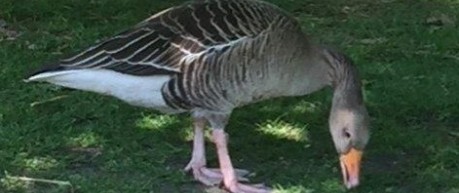Friday 22nd February 2019, 10:00am
Scientists have revealed how bird feathers form in a wave-like motion, creating a regular pattern in the skin, which could help cool birds.

Researchers have identified chemical signals that are switched on and off in the birds’ skin as feathers are arranged sequentially.
The findings could help design strategies to reduce feather density in farmed birds that can be prone to overheating, which is a major welfare concern in tropical climates.
The team used high-powered microscopes to analyse the earliest stages of feather development in various bird species before they hatched. They studied chicken embryos to track individual cells during the process.
In ducks and chickens, the team observed feather development sweeping across the skin like a wave, forming a regular hexagonal pattern.
The team found this wave-motion was driven by two components – a genetic signal called EDA and increasing cell numbers.
In flightless birds – such as ostriches and emus – the wave does not occur and feathers are arranged haphazardly.
Researchers say lack of flight over many generations may have allowed their feather arrangements to deteriorate.
Scientists are interested in how feathers develop because depth of plumage affects birds’ heat tolerance.
Most commercial breeds of chickens have too many feathers to cope with very high temperatures. This is important for agriculture in low and middle income countries, many of which have tropical climates and an increasing demand for poultry.
Experts are exploring the signals involved in feather formation with a view to developing breeds that are more heat resistant.
The study, published in the journal “PLOS Biology”, was led by researchers from The Roslin Institute.
"The formation of feathers has been studied for over 50 years as a way to understand how simple tissues interact to produce organs. With advances in technology, we can now watch the process of organ development as it happens, giving deeper insights into how the embryonic body produces a complex anatomy through cells both moving and signalling to one another.
As we uncover the mechanisms underlying how feather number is determined before chickens hatch, we can begin to explore ways of fine tuning feather density in farmed birds to be appropriate for the climate that they will inhabit."
Dr Denis Headon, Senior Research Fellow, The Roslin InstituteFor further information, please contact:-
Jen Middleton
University of Edinburgh, Press & PR Office
T: 0131 650 6514
M: 07795 640662
E: Jen.Middleton@ed.ac.uk